Small Yet Mighty Mercury Still Holds Many Mysteries
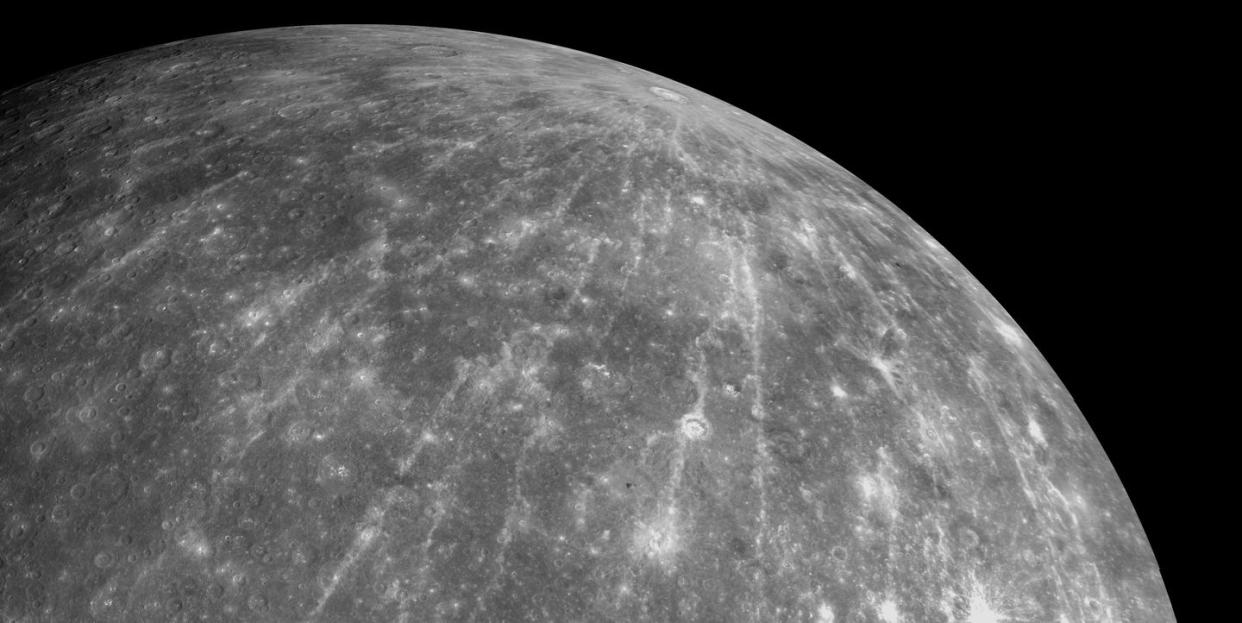
Rockets roared to life on August 3, 2004, as an intrepid spacecraft launched from Cape Canaveral and set out to uncover mysteries about the Solar System’s smallest planet: Mercury. The Messenger craft—short for Mercury Surface, Space Environment, Geo-chemistry and Ranging—rocketed toward the dense, little planet with big plans.
Mariner 10—the first spacecraft to visit multiple planets and use gravity assist to fling itself from one to another—swept past Mercury three times in the 1970s. It returned striking photos of the planet's surface and revealed what we know about temperature changes, giving scientists and astronomers a basic understanding of processes.
Only two missions have visited the mysterious little planet tucked against the sun. Mariner's images of Mercury opened up a whole new world for exploration. Messenger would give scientists much, much more data along with surprises astronomers could never have imagined.
Now, a new mission, BepiColombo is racing toward Mercury and will expand our understanding of one of the solar system's most intriguing planets.
A Few Quick Basics
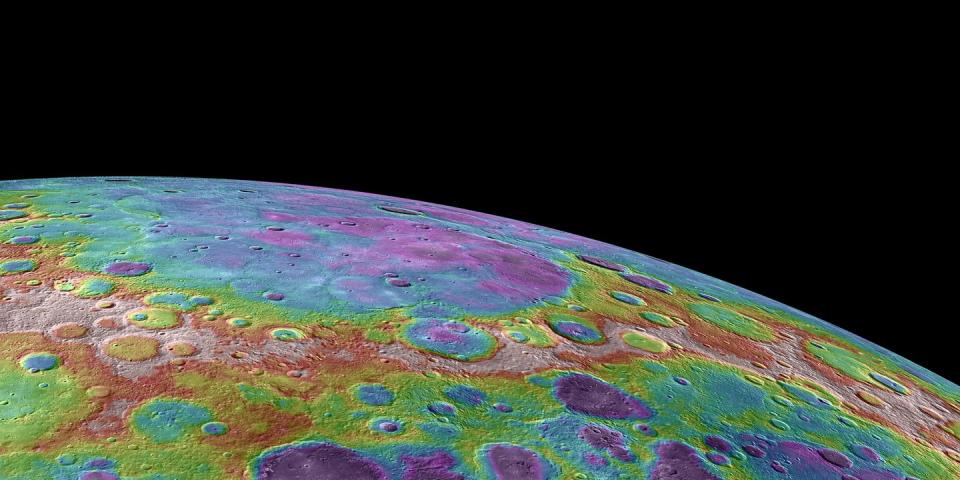
Mercury is the smallest planet in our solar system—slightly larger than the moon—with a radius of only 1,516 miles. If the Earth were the size of a nickel, according to NASA, Mercury would be the size of a blueberry.
It only takes sunlight 3.2 minutes to reach the surface of the Swift Planet, which sits tucked close to our sun—just 36 million miles away from the star. Sunlight reaches Earth in roughly eight minutes, by comparison. During the day, Mercury’s surface temperatures reach 800 degrees Fahrenheit and dip to -290 degrees Fahrenheit at night because the planet has no atmosphere to retain heat. So, don't think about colonization.
Mercury has what’s called an exosphere made from solar-wind propelled oxygen, sodium, hydrogen, helium, and potassium atoms that have bounced off the planet's surface. The moon-less Mercury’s magnetic field has a strength just one percent that of Earth’s and is wildly askew, much stronger along the planet’s northern Hemisphere, according to the New York Times. Every morning, at dawn, the planet is subjected to a spray of micrometeoroids, according to NASA.
Mercury’s core is solid and makes up about 85 percent of the planet’s radius. It’s liquid outer core, is also mainly made of iron and is surrounded by a rocky mantle. Like Earth, the planet has a thin hard crust.
Godspeed Messenger
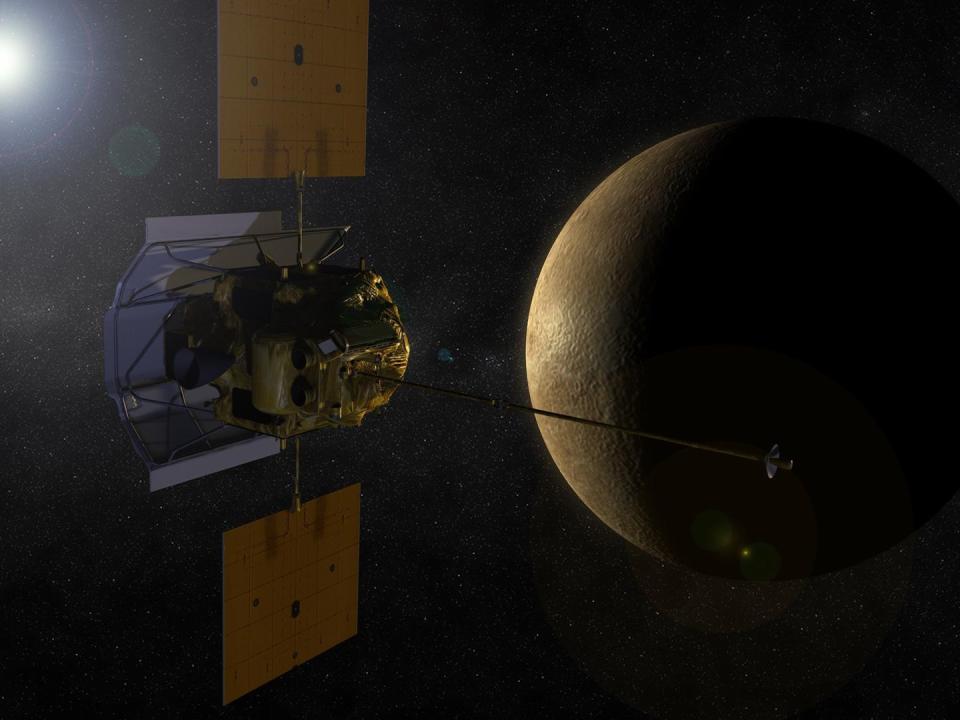
4.5 billion years ago, a swirl of gas, rock, and dust came together to form the smallest planet in our solar system. Because it lacks an atmosphere, the planet is covered in pockmarks from the many billions of years of asteroid and meteorite impacts.
Upon its closest approach, sweeping within 142 miles of the planet at a clip of 12,000 miles per hour, Messenger revealed insight into Mercury’s surface processes. Large flat plains, interpreted as (relatively) fresh lava flows—not yet scarred by impact craters—showed that the planet may be more dynamic than previously thought. It’s a volcanic planet, as astronomers long suspected. Messenger imaged one peak larger than the state of Delaware.
The spacecraft also proved something incredible: the presence of water ice within the planet’s shadowed craters. At the time of its discovery, the The New York Times reported that there was enough ice in some of the craters to cover Washington D.C. in a two and a half mile-deep block of ice.
The mystery deepened when Messenger’s readings revealed that a dark, tar-like organic substance surrounded many of the ice deposits. These compounds are similar to what’s found on some asteroids and meteorites.
The spacecraft also discovered volatiles like chlorine, sulfur, sodium and potassium on the planet, according to The Times, signifying that Mercury has a complex origin story. It has shrunk, too, since its inception—by as much as 14 miles, NASA says.
After an 11 year mission, on April 30, 2015, Messenger dove into the planet, smashing a 50-foot-wide crater in the planet near Janácek crater in Suisei Planitia.
Some Celestial Oddities
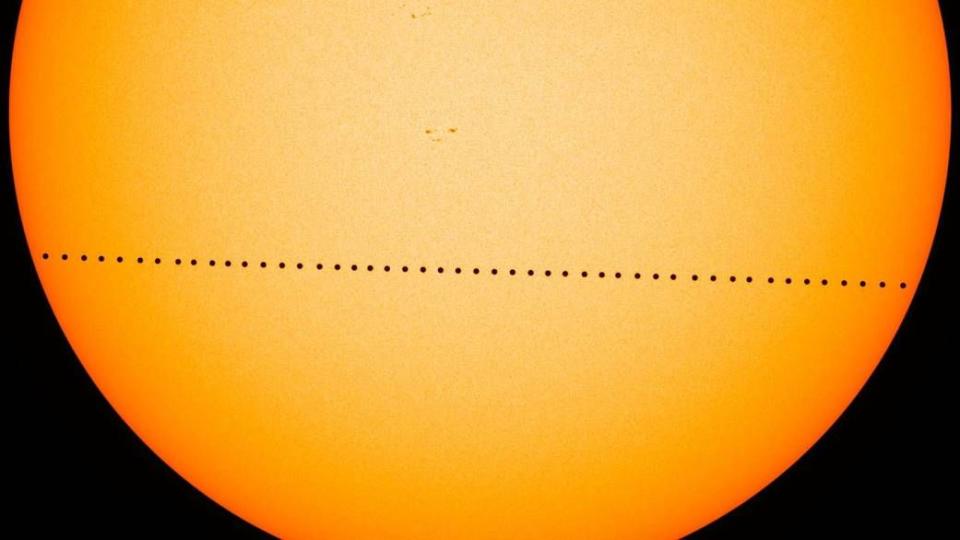
Just half a billion years after it formed, Mercury is thought to have been hit by a giant asteroid, which smashed a Texas-sized crater into the surface and knocked the planet into a strange, oblong orbit.
Mercury’s strange, egg-shaped orbit takes it around the sun every 88 days. Curiously, the planet rotates three times every two orbits, roughly every 58 Earth days. It’s a seasonless planet, too. Spring, summer, fall and winter are exactly the same because the axis along which Mercury rotates is almost perfectly upright.
Even weirder, some parts of the planet see two sunrises. The sun peeks over the horizon, briefly dips below, and then rises again for the rest of the day. The same process, but in reverse, happens along some parts of the planet during its sunset. One solar day—a full day-night cycle—takes 176 Earth days.
Roughly thirteen times each century, Mercury passes across the sun in a five-and-a-half-hour transit that is visible from Earth. Professional and amateur astronomers can track the planet with binoculars or a telescope equipped with a solar filter as it inches in front of the star.
⚠️ Never view the sun without a proper solar filter.
The last transit occurred on May 9, 2016, and the next will occur on Nov. 11, 2019. After that, the next transit won’t occur for 13 years. The entire transit will take five and a half hours, beginning at 7:35 a.m. EST and wrapping up at 1:04 p.m. EST, according to NASA.
Humans Make a Return Visit
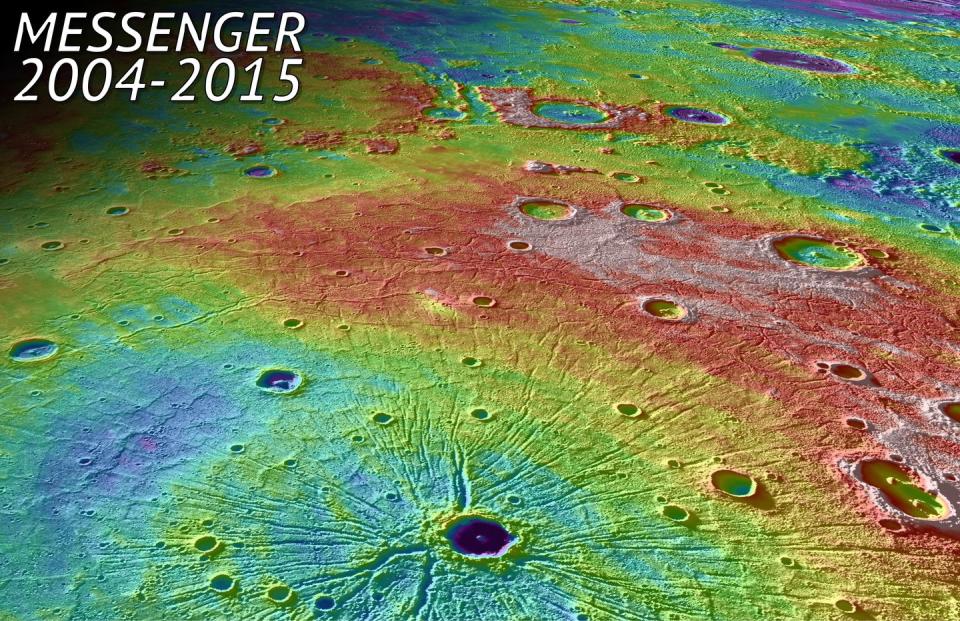
In the next 6 years, we’ll learn even more about Mercury. BepiColombo, an ESA-JAXA mission, is currently zipping toward the planet. It launched in October 2018, and is scheduled to reach the planet in 2025, at which point it will return even more information about our Solar System’s smallest planet.
The mission is composed of two spacecraft: ESA's Mercury Planetary Orbiter, which will carry a whopping 11 instruments, including cameras, spectrometers (IR, UV, X-ray, γ-ray, neutron), radiometer, laser altimeter, among others to probe the planet, and Mercury Magnetospheric Orbiter, which will carry an imager and only five scientific instruments, including a magnetometer, ion spectrometer, electron energy analyzer, cold and energetic plasma detectors and a plasma wave analyzer.
As BebiColombo sails closer to the Swift Planet, it will take measurements of the planet's exosphere and magnetosphere, collect data to reveal more about Mercury's origin, inspect its planetary layers and conduct a critical test of Einstein's theory of general relativity.
But eventually (in roughly 3.5 billion years), Mercury will expire. Scientists believe the sun will become brighter, expand, and swallow Mercury, Venus, and Earth before eventually turning into a white dwarf star.
But until then, there is much to learn about the smallest planet in our solar system. Does it have active tectonics? Do its craters contain water or sulfur ice? Does the planet have aurorae like here on Earth?
Luckily, BepiColombo is on the hunt for answers.
You Might Also Like

